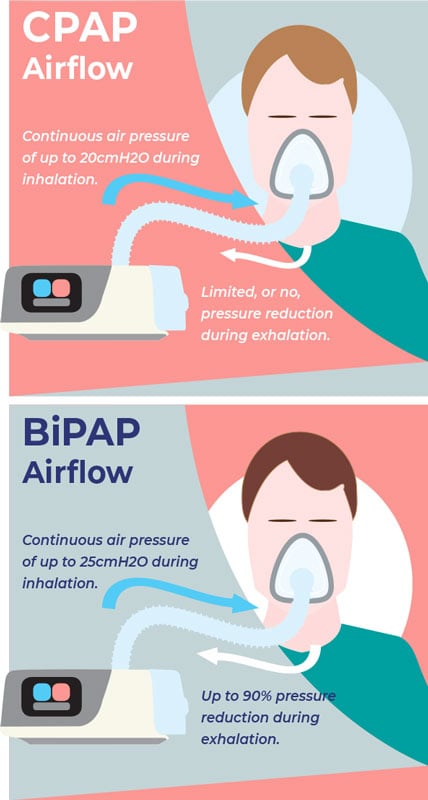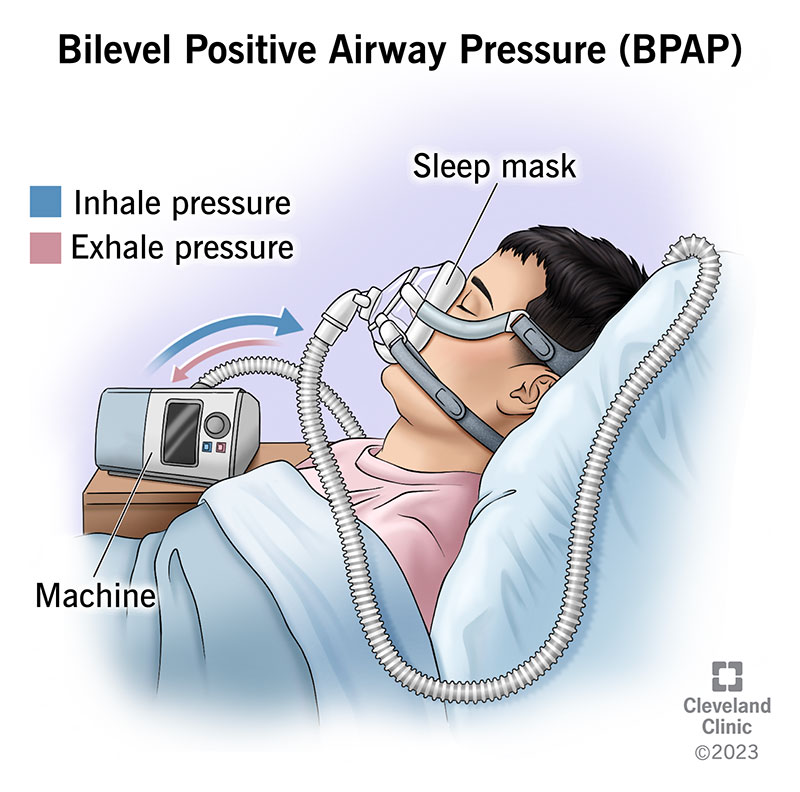Bipap vs. CPAP: Which Is the Ideal for Your Sleep Problem?
When browsing the intricacies of rest problems, the selection in between BiPAP and CPAP therapy is an essential consideration. Each modality uses distinct benefits customized to certain conditions, yet the choice depends upon private patient demands and comfort levels. While CPAP gives a consistent airflow ideal for obstructive rest apnea, BiPAP's double stress setups might enhance comfort for those with even more elaborate respiratory problems. Recognizing these distinctions can considerably affect treatment efficacy, leaving one to contemplate which alternative really aligns with their wellness requirements and lifestyle.
Understanding Sleep Disorders
Rest disorders include a variety of problems that disrupt typical rest patterns, influencing both the top quality and duration of rest. These problems can manifest in different types, consisting of insomnia, rest apnea, narcolepsy, restless leg disorder, and parasomnias. Each condition offers one-of-a-kind obstacles, commonly leading to substantial daytime fatigue, cognitive impairment, and emotional disturbances.
Insomnia is identified by problem falling or remaining asleep, while rest apnea involves duplicated disturbances in breathing during rest, often bring about fragmented remainder. Narcolepsy, on the various other hand, is noted by extreme daytime sleepiness and abrupt sleep assaults. Agitated leg disorder causes uneasy feelings in the legs, prompting an irrepressible impulse to relocate them, which can also impede the capability to go to sleep.
The effect of rest problems extends past private health and wellness, influencing total productivity, relationships, and lifestyle. Recognizing the certain nature of each problem is critical for reliable diagnosis and therapy. As sleep health ends up being increasingly recognized as an important element of general well-being, addressing these conditions is necessary for enhancing both sleep high quality and daily performance.
Exactly How CPAP Works
Continual Favorable Respiratory Tract Pressure (CPAP) treatment is often used as a key therapy for obstructive sleep apnea (OSA) The mechanism of CPAP entails the usage of a maker that supplies a consistent stream of air via a mask worn during sleep. This air flow maintains positive pressure in the air passage, avoiding the collapse or blockage of the throat that can take place throughout rest.
When an individual breathes in, the CPAP maker offers a constant flow of air, making certain that the respiratory tract remains open - BiPAP Rental. This not only relieves the symptoms of OSA, such as snoring and interrupted rest patterns, however also decreases the affiliated health and wellness risks, consisting of cardio issues and daytime fatigue
The stress settings on a CPAP machine can be customized to satisfy specific patient requirements, usually figured out through a sleep study. Overall, CPAP treatment has actually been revealed to considerably boost the high quality of sleep and general health and wellness for people experiencing from obstructive rest apnea.
Exactly How BiPAP Functions
BiPAP, or Bilevel Favorable Air Passage Pressure, is a specific form of non-invasive ventilation that is specifically valuable for clients with problems such as intricate rest apnea or breathing conditions. Unlike CPAP, which provides a constant stream of air at a single pressure, BiPAP offers two unique stress settings: a greater inspiratory pressure for breathing and a lower expiratory pressure for exhalation. This dual-pressure technique permits less complicated breathing, decreasing the effort needed during exhalation.
The tool runs via a mask fitted over the nose or mouth, attached to a maker that generates atmospheric pressure. When the patient inhales, the machine supplies the higher pressure to assist with air movement, ensuring that the respiratory tract stays open. Upon exhalation, the device automatically lowers the stress, making it much more comfortable for the patient to take a breath out.

Trick Differences Between BiPAP and CPAP

On the other hand, BiPAP (Bilevel Positive Respiratory tract Stress) provides two various pressure setups: one for inhalation and a lower one for exhalation. This double stress system enables more comfortable breathing, specifically for patients who fight with breathing out versus a continual stress. BiPAP is commonly recommended for clients with intricate rest apnea, chronic obstructive pulmonary condition (COPD), or those who require company website additional support during sleep.
In addition, the intricacy of BiPAP tools generally leads to a higher cost and needs a lot more cautious titration than CPAP. BiPAP Rental. Recognizing these vital distinctions can assist in recognizing which device might be better for specific rest problems, setting the foundation for enlightened Full Article therapy decisions
Picking the Right Treatment
The choice between BiPAP and CPAP treatment largely hinges on the specific features of the rest disorder, the person's general health, and their convenience with the gadget. CPAP, which delivers a continual stream of air, is frequently prescribed for obstructive rest apnea (OSA)
On the other hand, BiPAP provides 2 levels of stress: one for inhalation and a reduced one for exhalation. This dual stress system is helpful for clients with intricate sleep apnea or those that experience problem breathing out against a continual pressure. In addition, BiPAP is usually suggested for people with breathing problems, such as chronic obstructive lung disease (COPD), where differing pressure settings can boost comfort and conformity.
Ultimately, a comprehensive analysis by a sleep expert, consisting of a sleep research study, can help identify which treatment aligns finest with the person's needs. Variables such as comfort, simplicity of usage, and specific medical problems should likewise be taken into consideration to maximize treatment results.
Final Thought
In recap, both BiPAP and CPAP serve unique purposes in the monitoring of rest disorders. CPAP works for obstructive rest apnea via regular air movement, while BiPAP offers dual stress setups that enhance comfort for those with complex sleep apnea or respiratory issues. The option between these therapies need to be led by individual demands and problems, necessitating a comprehensive examination by a rest expert to guarantee ideal treatment outcomes and boosted top quality of rest.

Generally, CPAP treatment has actually been shown to considerably enhance the top quality of sleep and general health and wellness for people enduring from obstructive rest apnea.
BiPAP is frequently suggested for people with intricate rest apnea, chronic obstructive pulmonary disease (COPD), or those who require extra support go to website during rest.
CPAP is efficient for obstructive rest apnea with consistent air flow, while BiPAP provides twin stress setups that boost convenience for those with intricate rest apnea or respiratory concerns.